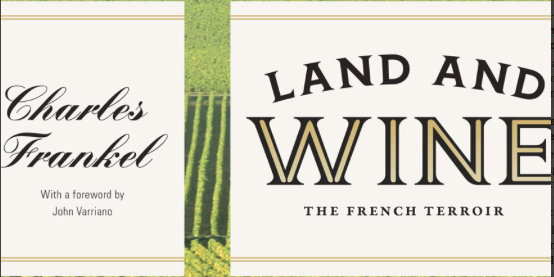 First, plant a chardonnay vine in the commune of Puligny-Montrachet in the French region of Burgundy. Now quickly plant another genetically identical to it in Santa Barbara County, California. Prune and train them similarly and when they’re of age make wine and mature it, using identical techniques, from the fruit of each. Now taste them side by side. You may well recognize a family resemblance, but you won’t have to be an expert taster to realize that they’re dramatically different. Why?
First, plant a chardonnay vine in the commune of Puligny-Montrachet in the French region of Burgundy. Now quickly plant another genetically identical to it in Santa Barbara County, California. Prune and train them similarly and when they’re of age make wine and mature it, using identical techniques, from the fruit of each. Now taste them side by side. You may well recognize a family resemblance, but you won’t have to be an expert taster to realize that they’re dramatically different. Why?
The agent responsible for their diverse flavor and aroma profiles is thought to be something called terroir. The French loan-word really just means “territory,” a particular, discrete plot of ground, but it implies quite a bit more. Because every physical location on the earth is subject to a singular set of environmental and ecological facts — things like temperature and rainfall, the condition and content of the soils, elevation, how the sun strikes it in the course of a day — it follows, or seems that it should, that whatever is grown or raised on that location will bear a distinctive signature. When the product is grapes destined for fermentation, the wine that results will be similarly stamped. Terroir is said to be the thing that gives fine wine a sense of place. It’s what one wine writer memorably called its whereness.
In his just-published book, “Land and Wine: The French Terroir,” science writer and lecturer Charles Frankel takes readers on what might be called a Tour de Terroir, a swift, chatty and generally readable survey of French wherenesses, the famous and not so places where French fine wine is sourced. His stated aim is to “to reveal the geologic framework that lies behind each great wine region” and to provide insight into how clay, gravel, sand, schist, flint, and marl – to name a few of the many gritty character actors we’re introduced to — can be responsible for the kaleidoscopic diversity that characterizes the output of the world’s greatest winemaking nation.
Land and Wine: The French Terroir
Charles Frankel
University of Chicago Press
251pp/ $27.50
A heads up: You’ll not only need to buckle your seatbelt for the journey, but pack some Dramamine. A scant 226 pages of text to work with means volcanic upheavals, primordial seas, tectonic plates, and carboniferous sedimentations whizz by the window at an alarming rate. We tour Champagne, the Loire Valley, Burgundy, Bordeaux, and eight more major French wine regions each of which gets chapter-length treatment, but our progress seems not only hurried but a tad joyless, in part because there are so few people (winemakers; expert tasters) on hand whose voices would humanize the relentless iteration of soil types and all those millions and millions of years.
Rocks are clearly the thing that Frankel knows best and is most comfortable explaining. Knowing little of the subject, I can’t vouch for its correctness, although I’m more than willing to give him the benefit of the doubt on it. The litany of geological terms is occasionally wearying, but it wasn’t the challenging vocabulary that began to chip away at my enthusiasm for this book. It was the growing suspicion that Frankel was never going to address the question he set out to answer: How does vineyard geology determine wine character? Describing the geologies underlying French vineyards is only half the work. How does it actually shape wine?
Admittedly, this is not yet a settled question. But there is scientific consensus on what is not happening: Vines do not take up and transfer to grapes a set of mineral aromas and flavors we imagine soils and rocks possess. Inorganic mineral compounds appear in wine solely in the form of mineral salts of which only sodium chloride (ordinary table salt) can be detected by tasting. So Frankel is off-target when he asserts that “Flint in the soil translates into spicy, smoky aromas . . .” but is on firmer ground elsewhere when he explains how rocks on the surface of the ground can absorb and retain solar radiation and by this means effect the rate at which grapes ripen.
More such observations would have made this book more valuable as an explication of terroir effects, as would acknowledging the influence of local yeast and soil microbe populations whose activities are of great interest to people studying the origins of wine character and which are increasingly viewed as key agents of terroir.
Are there rocks in our wine, or just in our heads? Inquiring minds still want to know.
This is an expanded version of a review that appeared in the Boston Globe on April 16, 2014.
Reach me at stephenmeuse@icloud.com
Follow Stephen Meuse